Những cạm bẫy/sai lầm thường gặp trong Django
By JoeVu, at: 13:00 Ngày 16 tháng 12 năm 2022
Thời gian đọc ước tính: __READING_TIME__ phút


Django là một framework ứng dụng web mạnh mẽ và linh hoạt có thể giúp các nhà phát triển tạo ra các trang web và ứng dụng năng động, tinh vi. Tuy nhiên, giống như bất kỳ dự án phát triển phần mềm nào, có những cạm bẫy và sai lầm tiềm ẩn có thể xảy ra khi làm việc với Django. Trong bài viết này, chúng ta sẽ xem xét một số cạm bẫy và sai lầm phổ biến nhất của nhà phát triển khi làm việc với Django.
Đừng cố gắng làm chủ Django ngay từ đầu
Django là một hệ thống phức tạp và việc hiểu cách thức hoạt động của nó và cách sử dụng hiệu quả có thể mất một thời gian. Các nhà phát triển không dành thời gian để hiểu framework có thể thấy mình gặp phải rất nhiều vấn đề và mắc rất nhiều lỗi.
1. Không dành thời gian để đọc tài liệu chính thức của Django: Hãy dành thời gian để đọc kỹ tài liệu chính thức của Django và hiểu framework trước khi bắt đầu.
Ví dụ: Charfield có các tùy chọn null và blank, nhưng mỗi tùy chọn có ý nghĩa và tác động riêng. Việc trộn lẫn điều này sẽ dẫn đến dữ liệu không nhất quán trong cơ sở dữ liệu.
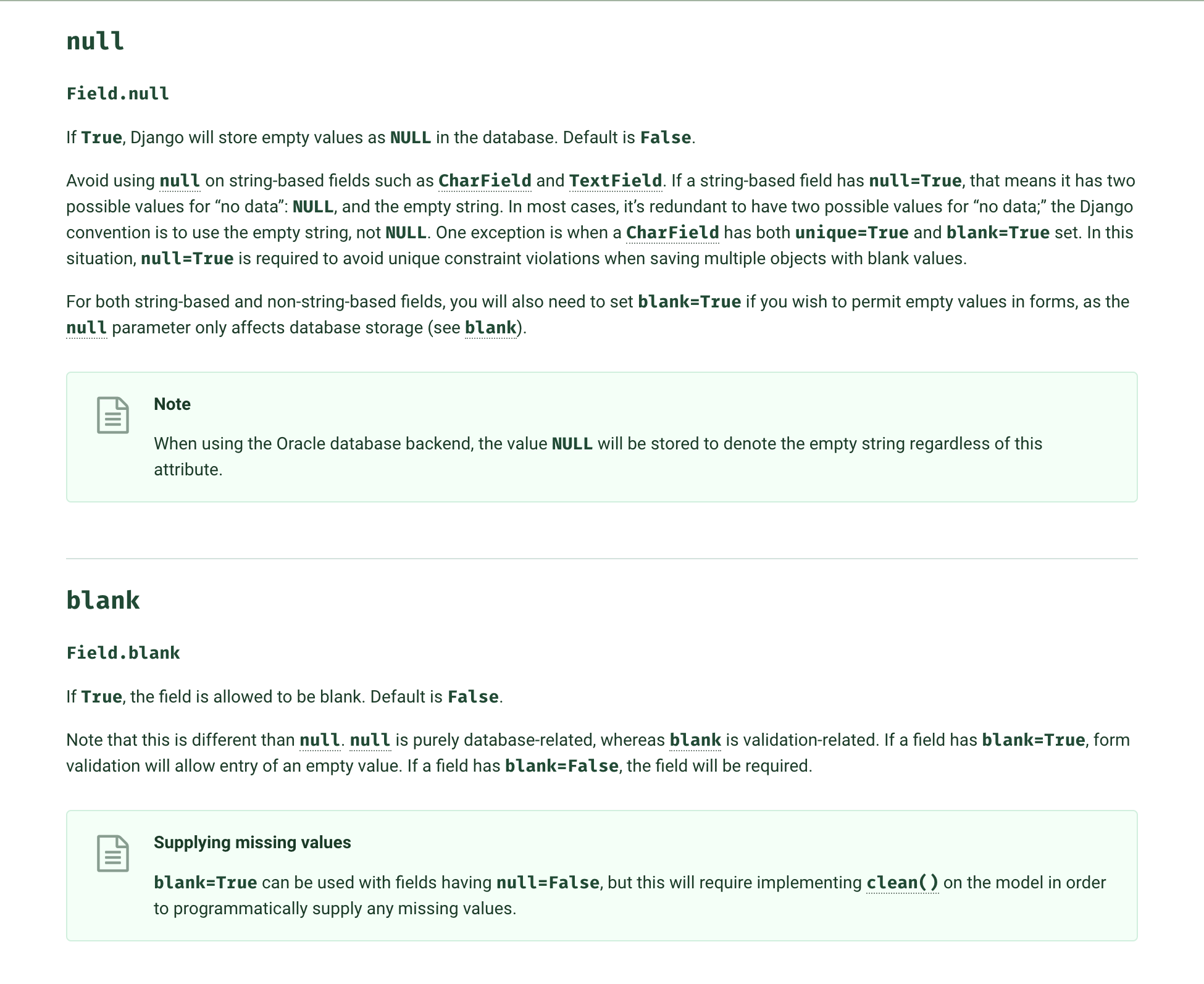
2. Không sử dụng phiên bản Django phù hợp: Hãy chắc chắn rằng bạn đang sử dụng phiên bản Django mới nhất cho dự án của mình.

3. Không thiết lập môi trường ảo: Thiết lập môi trường ảo cho mỗi dự án Django để ngăn chặn xung đột giữa các gói và các phiên bản Django khác.
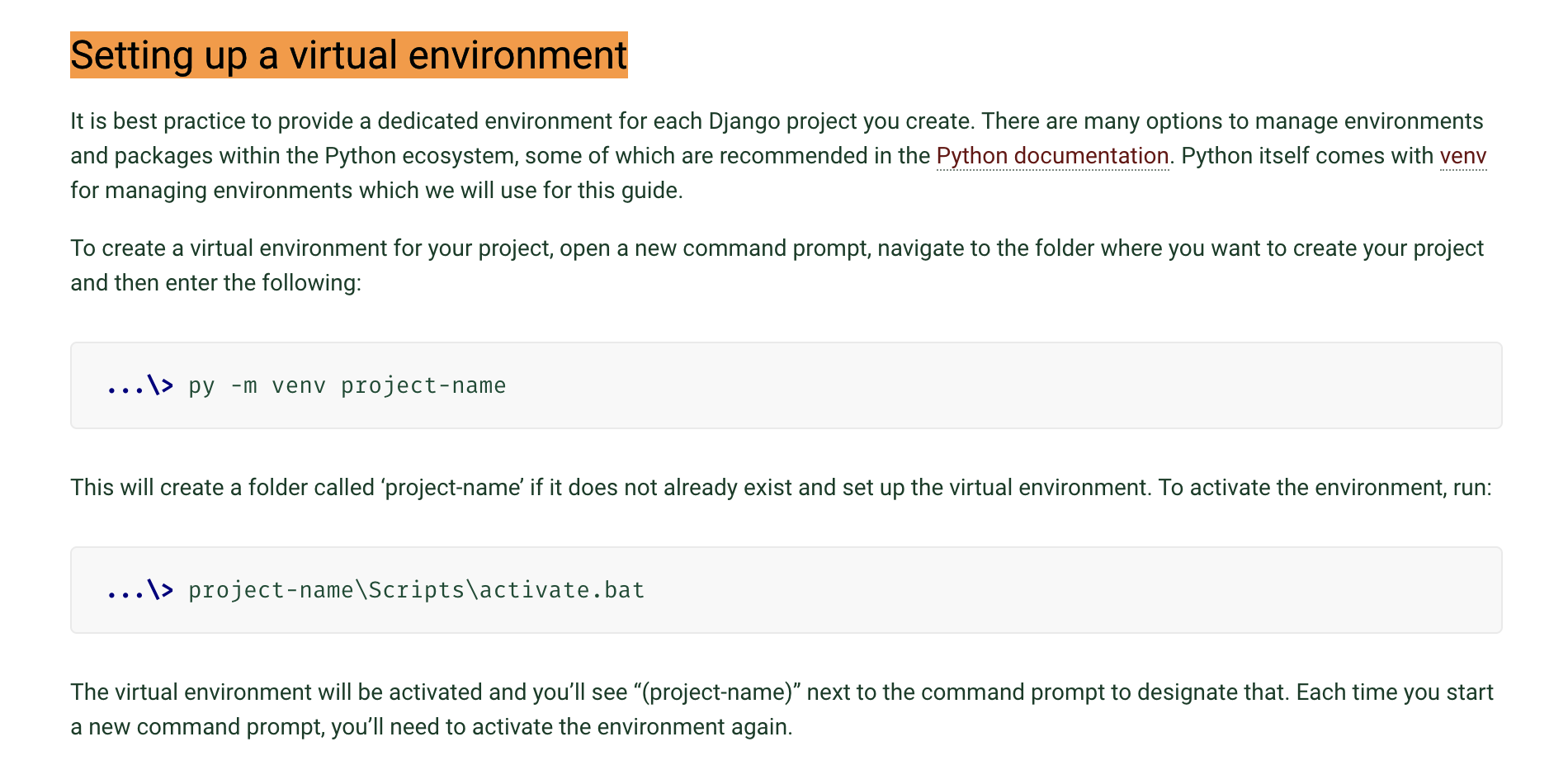
4. Không thường xuyên kiểm thử: Hãy chắc chắn thường xuyên kiểm thử mã để đảm bảo mọi thứ hoạt động đúng cách. Viết test đơn vị/tự động là một lựa chọn để tránh lỗi này.
5. Không sử dụng cơ sở dữ liệu phù hợp: Chọn cơ sở dữ liệu phù hợp cho dự án của bạn và dành thời gian để cấu hình đúng cách.
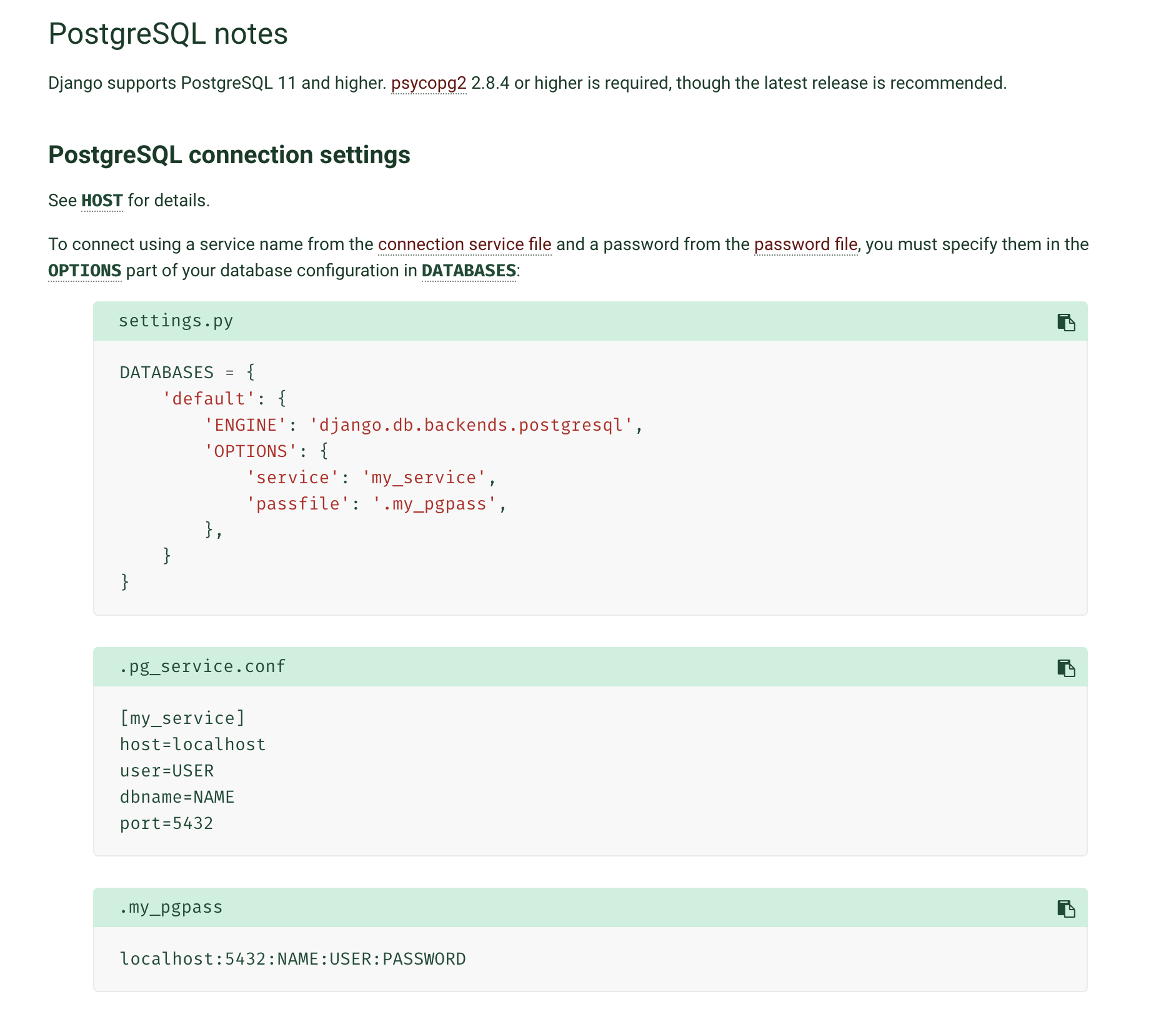
6. Không dành thời gian để tìm hiểu các thực tiễn tốt nhất: Hãy dành thời gian để tìm hiểu các thực tiễn tốt nhất cho việc phát triển Django, chẳng hạn như sử dụng các view dựa trên lớp và sử dụng mô hình Model-View-Template.
Một cuốn sách được đề xuất: Django Two Scoops
7. Không sử dụng các công cụ phù hợp: Sử dụng các công cụ phù hợp cho công việc, chẳng hạn như sử dụng Django Debug Toolbar để gỡ lỗi mã của bạn. Điều này cực kỳ hữu ích cho việc gỡ lỗi và giám sát trang web.
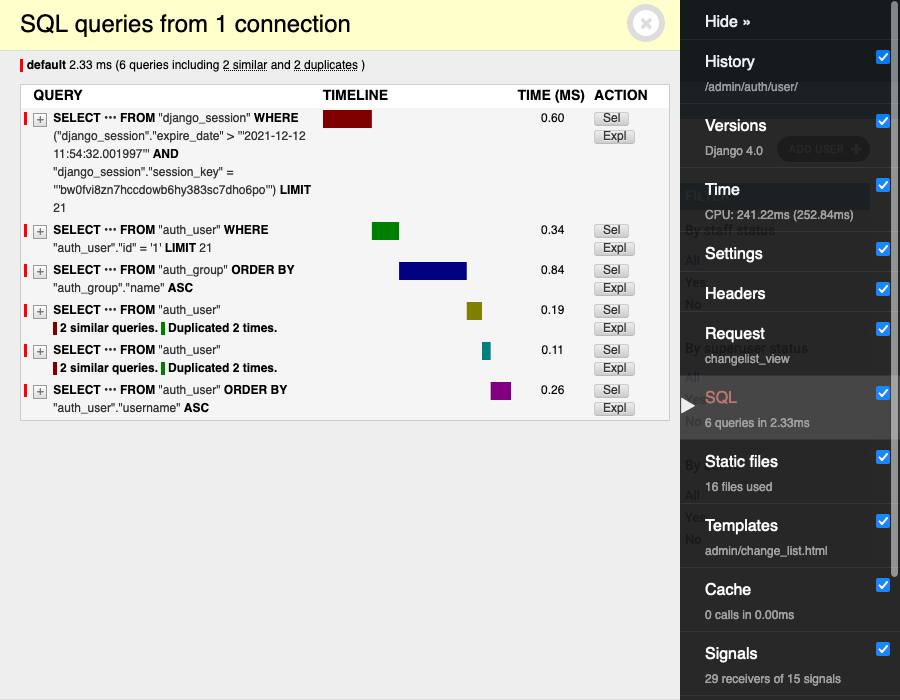
8. Không sử dụng các biện pháp bảo mật phù hợp: Đảm bảo rằng trang web được bảo mật bằng cách sử dụng các biện pháp bảo mật phù hợp, chẳng hạn như sử dụng HTTPS và sử dụng mật khẩu an toàn.
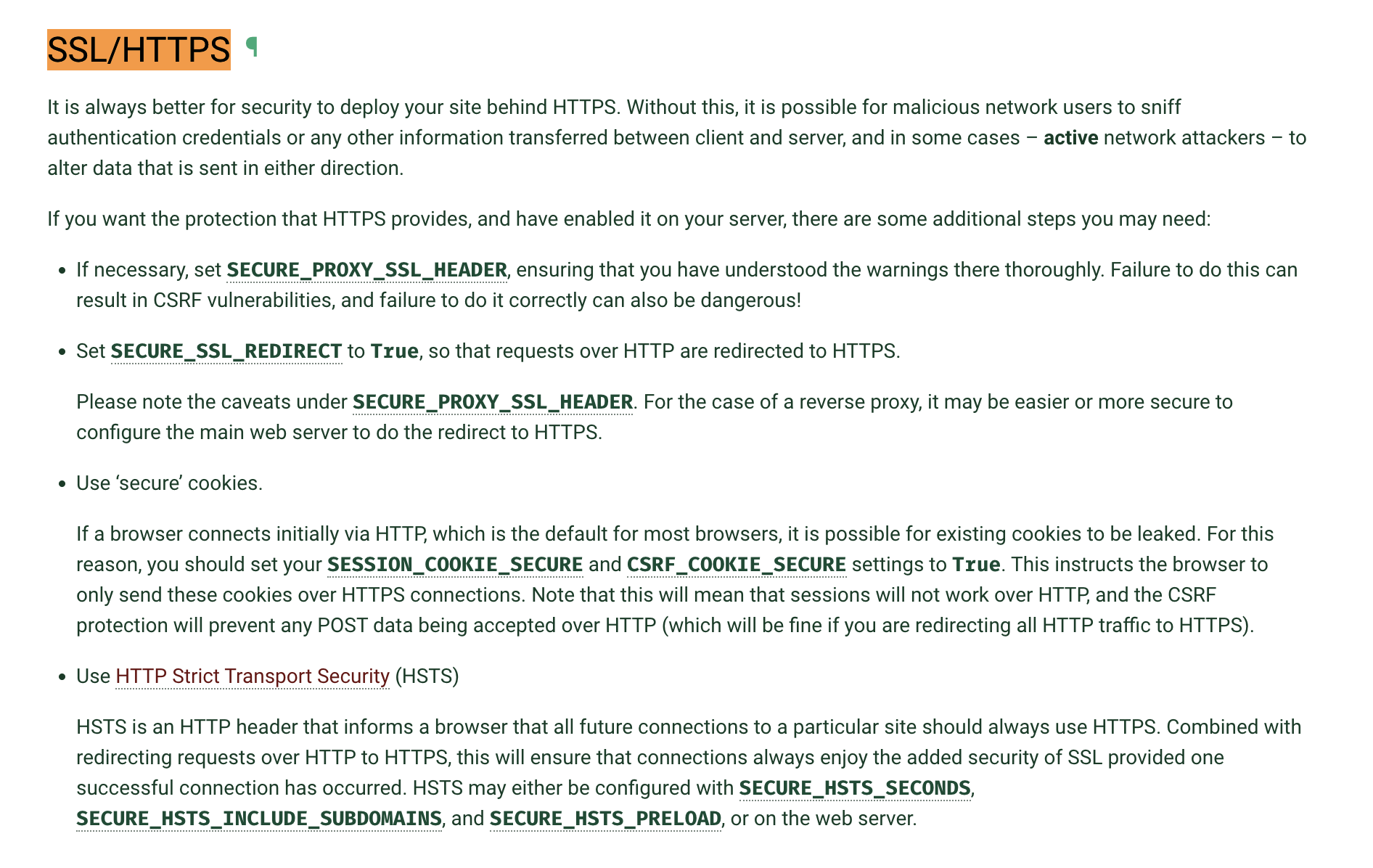
Đừng cấu hình Django không đúng cách
Django là một framework phức tạp và nó yêu cầu cấu hình đúng cách để hoạt động tốt. Các nhà phát triển nên dành thời gian để cấu hình Django một cách chính xác để đảm bảo rằng ứng dụng chạy trơn tru.
1. Không thiết lập cấu hình cơ sở dữ liệu đúng cách: Hãy chắc chắn thiết lập engine, người dùng và mật khẩu đúng cho cơ sở dữ liệu của bạn khi cấu hình Django.
2. Không sử dụng migrations: Sử dụng migrations để đảm bảo rằng cơ sở dữ liệu của bạn được cấu hình đúng cách với dữ liệu chính xác.
3. Không thiết lập logging: Logging cho phép các nhà phát triển theo dõi lỗi và xác định các vấn đề tiềm ẩn. Thiết lập logging trong Django để ghi lại lỗi và gỡ lỗi nhanh hơn.
4. Không bật kết nối an toàn: Sử dụng SSL để đảm bảo rằng ứng dụng của bạn được bảo mật và được mã hóa.
5. Không thiết lập cài đặt mẫu đúng cách: Thiết lập cài đặt mẫu đúng khi cấu hình Django để đảm bảo rằng các mẫu đúng được sử dụng cho các trang đúng.
6. Không sử dụng caching: Sử dụng caching để tăng hiệu suất của ứng dụng. Thiết lập caching trong Django để giảm thời gian tải trang.
7. Không sử dụng bộ kiểm thử: Sử dụng bộ kiểm thử để đảm bảo rằng ứng dụng của bạn đang hoạt động chính xác. Thiết lập bộ kiểm thử khi cấu hình Django để phát hiện bất kỳ lỗi tiềm ẩn nào.
Đừng kiểm thử ứng dụng thường xuyên
Kiểm thử là một phần quan trọng của bất kỳ dự án phát triển phần mềm nào và điều này đặc biệt quan trọng đối với các dự án Django. Các nhà phát triển nên dành thời gian để kiểm thử ứng dụng của họ một cách đúng cách để đảm bảo rằng chúng hoạt động chính xác trước khi phát hành.
1. Không sử dụng phiên bản Django chính xác: Khi phát triển một ứng dụng trong Django, điều quan trọng là phải đảm bảo rằng phiên bản Django chính xác đang được sử dụng. Điều này có thể được thực hiện bằng cách kiểm tra tài liệu về tính tương thích phiên bản của ứng dụng.
2. Không sử dụng cài đặt cơ sở dữ liệu đúng cách: Các ứng dụng Django yêu cầu cài đặt cơ sở dữ liệu chính xác để hoạt động bình thường. Điều này có thể được thực hiện bằng cách nghiên cứu và cấu hình cài đặt cơ sở dữ liệu một cách thích hợp.
Mẹo: Kiểm tra gói dj-database-url này để có cấu hình cơ sở dữ liệu an toàn
3. Không viết test: Viết test là một phần quan trọng của việc phát triển ứng dụng. Điều này giúp đảm bảo rằng ứng dụng đang hoạt động bình thường và có thể được sử dụng trong môi trường sản xuất.
Mẹo: Kiểm tra các gói này để quản lý test tốt hơn unittest, django-pytest
4. Không sử dụng các bản vá bảo mật mới nhất: Bản vá bảo mật rất quan trọng đối với các ứng dụng để có thể duy trì tính bảo mật và cập nhật. Do đó, điều quan trọng là phải đảm bảo rằng các bản vá bảo mật mới nhất luôn được áp dụng và cập nhật.
5. Không dành thời gian để kiểm thử ứng dụng một cách đúng cách: Điều quan trọng là phải dành thời gian để kiểm thử ứng dụng một cách đúng cách trước khi triển khai nó vào sản xuất. Điều này có thể được thực hiện bằng cách kiểm thử ứng dụng trong các môi trường khác nhau, chẳng hạn như phát triển, staging và sản xuất. Ngoài ra, việc sử dụng các công cụ kiểm thử tự động (playwright, selenium) có thể giúp đảm bảo ứng dụng đang hoạt động chính xác.
Đừng quản lý các phụ thuộc không đúng cách
Django được xây dựng trên rất nhiều framework và thư viện khác và việc quản lý chúng có thể rất khó khăn. Các nhà phát triển nên dành thời gian để quản lý các phụ thuộc một cách đúng cách để đảm bảo rằng ứng dụng của họ đang chạy trơn tru.
1. Không sử dụng cấu trúc ứng dụng tích hợp sẵn của Django: Django cung cấp một cấu trúc ứng dụng tích hợp sẵn giúp quản lý các phụ thuộc dễ dàng hơn. Để tránh lỗi này, hãy sử dụng cấu trúc tích hợp sẵn cho các ứng dụng Django của bạn.
2. Không sử dụng môi trường ảo: Môi trường ảo rất hữu ích để phân lập các dự án và các phụ thuộc của chúng. Để tránh lỗi này, hãy sử dụng môi trường ảo để giữ cho các phụ thuộc của bạn được phân lập với nhau. Các gói được đề xuất là pyenv, virtualenv, pyenv-wrapper
3. Không sử dụng pip để cài đặt các phụ thuộc: Pip là trình quản lý gói chính thức cho Python và là cách được đề xuất để cài đặt các phụ thuộc Django. Để tránh lỗi này, hãy sử dụng pip để cài đặt tất cả các phụ thuộc Django của bạn.
4. Không sử dụng hệ thống kiểm soát phiên bản: Hệ thống kiểm soát phiên bản như git giúp theo dõi các thay đổi đối với codebase của bạn và giúp dễ dàng triển khai và quản lý ứng dụng của bạn. Để tránh lỗi này, hãy sử dụng hệ thống kiểm soát phiên bản như git để quản lý ứng dụng Django của bạn, ví dụ: Github, Gitlab
5. Không cập nhật các phụ thuộc của bạn: Các phụ thuộc có thể trở nên lỗi thời theo thời gian và đôi khi có thể dẫn đến các lỗ hổng bảo mật. Để tránh lỗi này, hãy thường xuyên cập nhật các phụ thuộc của bạn để đảm bảo rằng ứng dụng của bạn được bảo mật và cập nhật.
6. Không quản lý các phụ thuộc trong Django một cách chính xác: Django cung cấp một hệ thống quản lý phụ thuộc tích hợp sẵn giúp dễ dàng quản lý các phụ thuộc. Để tránh lỗi này, hãy sử dụng hệ thống quản lý phụ thuộc của Django để quản lý các phụ thuộc của bạn.
Một số gói/công cụ hữu ích:
- https://docs.python-guide.org/dev/virtualenvs/#virtualenv
- https://docs.python-guide.org/dev/virtualenvs/#virtualenvwrapper
- https://www.docker.com/
Kết luận
Đây chỉ là một số lỗi phổ biến nhất mà các nhà phát triển mắc phải khi làm việc với Django. Hiểu cách sử dụng framework, cấu hình Django đúng cách, xác thực đầu vào của người dùng, kiểm thử ứng dụng và quản lý các phụ thuộc đều là những bước quan trọng trong việc tạo ra một ứng dụng Django thành công. Dành thời gian để hiểu và sử dụng framework một cách chính xác sẽ giúp các nhà phát triển tránh được những cạm bẫy này và đảm bảo rằng ứng dụng của họ thành công.





